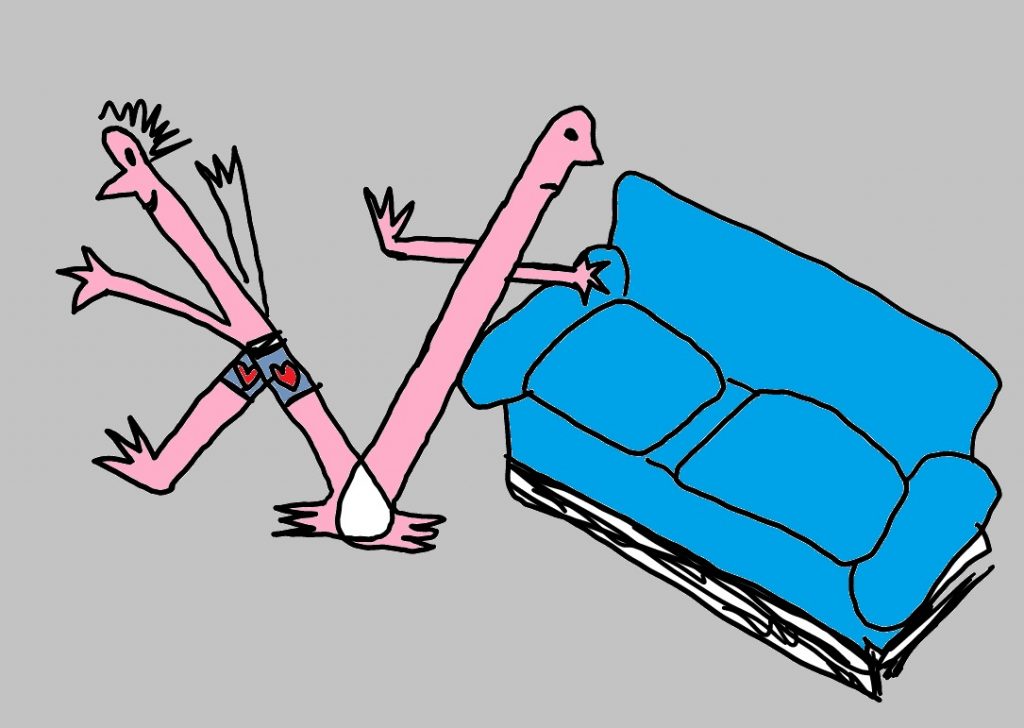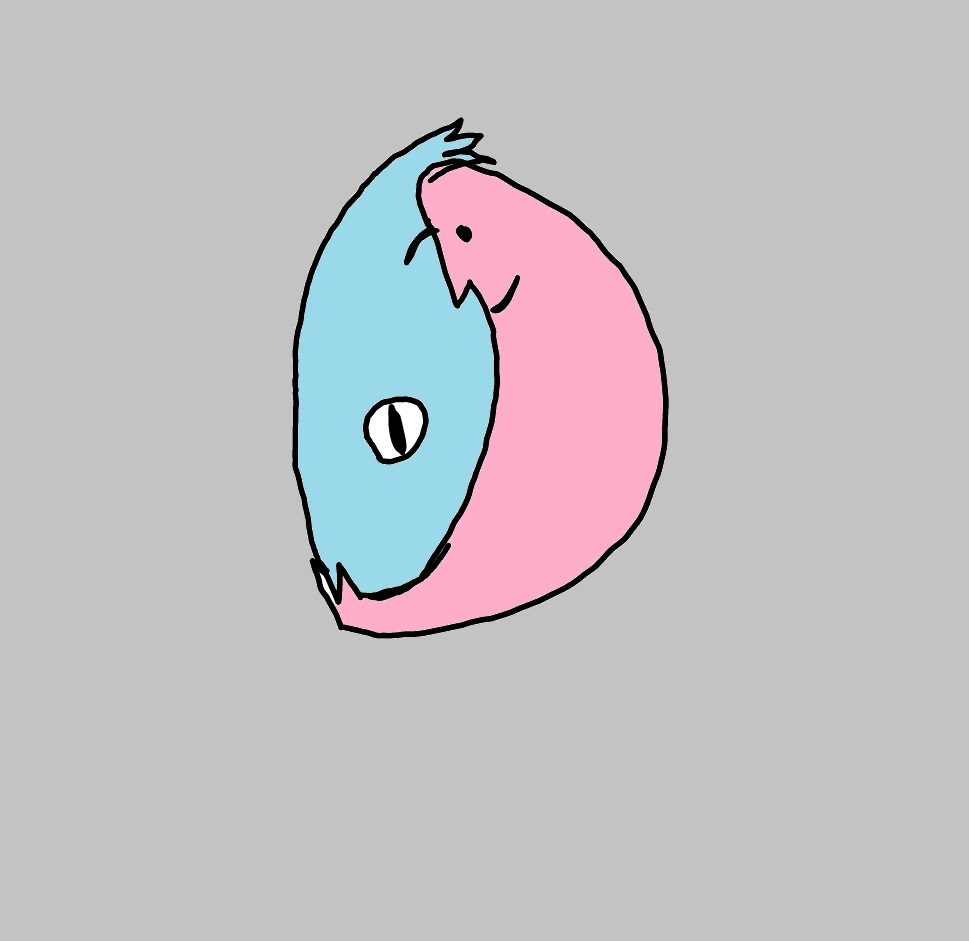Being Highly Sensitive is often presented as being shy, introverted and easily overwhelmed. Often, high sensitivity is even conflated with introversion. But what if you tick the HSP boxes, but don’t really identify with being an introvert? What if your are both a Highly Sensitive Person (HSP) and also a sensation seeker?
The answer is yes. There is a percentage of Highly Sensitive People who are what Elaine Aron terms “High Sensation Seeking”.
Being a Highly Sensitive Sensation Seeker means that you’re walking a fine line between feeling bored, and feeling overstimulated. You have an introverted side that needs peace and quiet and alone time. You also have an extroverted side that wants to have adventures, learn new things, meet people, go out etc.
In other words, you are both adventure seeking, and you need peace and quiet. But you obviously can’t have both at the exact same time, so this can get confusing.
30% of HSPs are Sensation Seeking
According to Dr Tracy Cooper – who has done research on sensation seeking HSPs, sensation seekers are approximately 30% of the Highly Sensitive population. So if this sounds like you, you are not alone. Yet, you are definitely in the minority and you’ll meet plenty of HSPs who won’t know what to make of your risk taking tendencies.
As a sensation-seeking HSP you may feel like you don’t really fit anywhere. You like hanging out with the extroverts, but they don’t understand when you need time alone. You might be active, party and be super social for a while, but if you don’t also take time off, then you will inevitably crash. Now it looks like you are depressed, or something is wrong.
Your extroverted friends may tell you to get over it and go and do something with them. They think that you’re sitting at home moping, and that going out will make you feel better. They don’t understand that you simply need time to recharge, because you’ve been ignoring your introverted side, and need time to rebalance.
Worse, if you don’t understand this trait yourself, then you may believe that you are “supposed” to be completely extroverted and that there IS something wrong with you for needing time alone. After all, if that were normal, wouldn’t your friends need time alone too?

The truth is, we’re all different and being Highly Senstitive + a High Sensation Seeker places you between groups. You can relate to the extroverts and the introverts. You like adventure and you also like spending time at home, alone.
What life is like as a HSP Sensation Seeker
Typical HSP tips to avoid overwhelm may not work well for you, because they seem to suggest that just doing less overall is what will make you feel better. Yet, you know that when you spend too much time being calm and quiet, you get really bored and frustrated.
I personally experienced this back in 2009 when I burned out and needed to rest (a lot!). While rest helped me recharge, it also stressed me out because it was so boring! This makes self-care more complicated when you are a sensation seeking HSP. Your novelty seeking side clashes with your sensory processing sensitivity. One part of you craves intense, new, exciting sensations, and the other side of you wants to stay within your comfort zone!
What’s more, when you burn out like I did, you simply cannot handle very intense sensations, because this overstimulates you and your nervous system is already frazzled as it is. So for me, that burnout period was a time when I really had to work at being friends with the part of me that craved lots of quiet time. All adventures were on hold.
The inner conflict HSP Sensation Seekers need to deal with
As a Highly Sensitive Sensation Seeker you can end up with an inner conflict between your introverted and extroverted side. Your extroverted side hates your introverted side for being a party pooper. Your introverted side hates your extroverted side for creating stress and chaos. As your inner parts are fighting like Roadrunner and Wile E. Coyote, you get pulled in two opposite directions. It can feel like you need to choose, that you need to be either or but can’t be both.
Yet, as long as you are pulled apart like this and trying to choose for introversion or extroversion, you don’t have all your natural energy available and can easily self-sabotage the best of plans. You take a few introverted steps and your extroverted side yells “no way!”. Then your extroverted side takes a few different steps, and your introverted side just blocks everything.
The thing is, if this is who you are then you need to know how to integrate these two different sides of you and get them to work together. Your inner introvert and extrovert are fighting because they don’t know that it’s possible to both get their needs met. They don’t know what a win-win feels like, so they are sabotaging each other.
HSP Sensation Seekers need to integrate their adventurous and their quiet side
Integrating these opposing sides and getting them to work together means walking a very narrow path: too much excitement and your introverted side gets stressed, too much calm and quiet and your extroverted side feels lifeless.
Getting these sides to work together takes skill, practice and a plan.

You need to mediate between these parts of you, consciously. This means understanding what each side wants and needs. It also means acknowledging real fears that both of these parts have.
Your extroverted side is afraid of living a boring suburban life and whittling away your potential by listening to the “shoulds” and doing what is “normal”. Your introverted side on the other hand is worried that when you rock the boat and go your own way, that this will be too stressful and you’ll never get the peace you crave.
There is a way to keep both inner parties happy. The Ultimate You needs to be in charge of the masterplan. The Ultimate You is neither introverted nor extroverted, but both. The Ultimate You can oversee both sides of your personality.
The narrow path of HSP Sensation Seeking freedom
Instead of taking down-time when you crash, and then going all out when your energy perks up again, you can learn to balance these ups and downs on a smaller, daily scale. That way, you avoid the huge highs and lows that come from spending too much time in either extreme.
Your personal balance is unique, but there is a way to map it out and hone your ability to walk your own narrow path. Narrow may sound restrictive, but it’s actually the the perfect balance that gives you what you most want.
Walking this narrow path gives you both freedom to do what you most want, and the inner peace that comes with getting the rest you need.
As an Sensation Seeking HSP you have the natural ability to fine-tune and walk the narrow. You’re like a mountain goat able to balance on a narrow ridge and being totally at ease there. Your true path of ease doesn’t feel restrictive, it’s where you are most alive and free.
Since you can’t technically occupy that much space anyway, a narrow personal path will actually work just fine. You can’t be everywhere, and you can’t do everything, so you’ll need to make choices either way.
Why not make the kinds of choices that align with who you truly are?
Because whether you want to or not, these two opposites within you are a package deal.
Knowing where your introverted and extroverted side meet will help you to make better and easier choices
Restriction is not a bad thing, it can actually help make moving forward a lot easier.
Yet, if your introverted Will E. Coyote side is constantly trying to get smarter and faster in order to “catch up” with your roadrunner extroverted side, then there will be constant accidents, hurts and disappointments.
And if your roadrunner extroverted side feels unsafe to rest, because it knows your introverted side will try to blow it up to finally have some peace and food, then you will keep running and rushing and not want to ease up once you’re out and about, for fear of never having fun again.
It’s time Will and Roadrunner sat down and worked through this logically. They’ve proven by now that the chasing and blaming and constant sabotage is pointless. They’re different, and they can’t destroy each other.
How can you start to honour and accept both?
How can you get better at balancing your introverted and extroverted side?
I’m a Highly Sensitive Sensation Seeker myself. It’s part of what led to my complete and utter burn-out once upon a time. In the end, my body just pulled the plug on me to make me rest and figure myself out (but doing so was excruciatingly boring!).
In the end, your body will force you to balance both sides, one way or another. However, what I want for you is for you to take the reigns. When you actively balance both sides of you in advance, daily, instead of waiting for balance to be forced upon you through chronic stress and overwhelm or sickness and isolation, life gets a lot easier!
If you’re interested in taking charge, check out my Happy Sensitive Foundations Programme. It’s all about understanding your own needs and creating a practical approach that lets both sides of you get what they need, without crashing and burning.
In this programme I can teach you how to learn to balance both sides of you pro-actively, instead of falling into either overwhelm or boredom and feeling out of control. These are skills for life. Having them means you get to live on that narrow ledge that is both exciting and peaceful.
With self awareness, self acceptance and a smart plan, you can do the things you want to do, without being overwhelmed.
Can you get more or less sensation seeking over time? Does this trait change?
Sometimes clients notice that they were far more introverted, or far more extroverted as a kid. So it seems like the balance of sensation seeking and high sensitivity shifts. But does it?
There is a difference between who you are deep inside, versus how you present yourself. If you’re surrounded by super extroverted people, you might react by joining them, or you might try to balance out the situation by becoming more introverted.
Also, your idea of what is a thrill, will likely change over time. (I mean, part of me wants to go back to a place like Raging Waters. I got to go once as a kid and it was amazing! But still, I know that if I actually went now, the experience might be very different. Like that time more recently when climbed on a kind of bouncy castle in a lake – and tore my meniscus within the first 5 minutes. Not so fun after all.)
Your interests and the way you experience life changes. A love for roller coasters, may turn into a love for rock climbing. Or perhaps, you take much less physical risk than you used to and now make daring documentaries. You’ve done away with some risky behaviours and now are into a very different kind of thrill seeking (like taking fun new classes, or traveling).
In short, how you express you sensation seeking and highly sensitive side, will change over time. That doesn’t mean the traits themselves have changed. Just that, well being now looks different for you than it used to 10 years ago.





















Comments on this entry are closed.